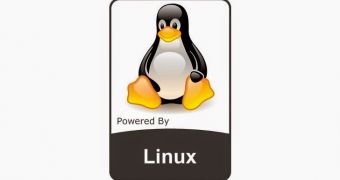While in the first lesson of our Learning Linux series you learned the basics of Linux and the difference between a GNU/Linux operating system and the Linux kernel, in the second one you found out how GNU/Linux OS works.
Today you'll learn a little about GNU/Linux distributions, as I am going to teach you a few basic things about them, such as how to download one, how to recognize one, how to write it on a CD/DVD/USB media, and how to use it, starting with the boot process, various screens you might encounter, and the live session or installer.
OK, so first things first, how many GNU/Linux distributions are there? To my knowledge, there are more than 2,000 distros available for download, and 99 percent of them are free and open source, which means that you can modify any of them as you see fit and redistribute it as your own GNU/Linux operating system.
When you're new to Linux, you most probably have no idea how to recognize, download and use a GNU/Linux distribution, not to mention which one to choose because there are thousands of them out there. There are many methods of finding distributions, but my suggestion is to take a look at our dedicated Linux Distributions download section.
There, you can find the latest updated distributions (default filter), as well as the most rated and downloaded ones. Bookmark that page and open it from time to time to see what GNU/Linux distributions have been added lately, but I recommend using the RSS feed available on the respective page for easier monitoring.
We have approximately 2,000 distros there, so after a bit of browsing through them, you will learn that most GNU/Linux operating systems are distributed as ISO images of different sizes, starting from a few MB to over 8 GB. You'll also learn that the ISO images either support both 32-bit and 64-bit computers in a single image (known as dual-arch) or as separate ones.
There are over 2,000 distros, but only a few truly independent
It is also very important to know that, while there are over 2,000 GNU/Linux distributions available, most of them are based on a few that are there from the beginning of things. For example, the popular Ubuntu is based on Debian GNU/Linux, but the latter is based on nothing. Arch Linux is also an independent OS, but Manjaro Linux is based on Arch Linux.
Among the Linux kernel-based operating systems that are independent and on which hundreds of other distributions are based, we can mention Debian GNU/Linux, Red Hat Linux, Slackware, Arch Linux, Gentoo, and many other small ones that are listed in this Wikipedia article.
Using ISO images
Using an ISO image of a GNU/Linux operating system is quite easy. All you have to do is check if your computer's processor is 64-bit capable or not, download the ISO image that corresponds to your PC's architecture, and save the file somewhere on your PC. If you are using Microsoft Windows or Mac OS X, you should first find a tool that can write ISO images to a USB stick or CD/DVD disc.
I always recommend using USB keys to write ISOs because they are modern technology, and there are some advantages like faster booting, more responsive live session, and even persistence (the ability to save your live session and reuse the USB stick whenever you want, without the need to save anything on your computer's disk drive). Optical medias are read only!
So, once you've written the ISO image to a USB stick, you will need to insert it into an empty USB port on your computer, reboot the machine, and activate the boot menu by pressing the corresponding F key (e.g. most PCs use either F2, F8 or F11 keys, so find out yours). Some computers don't have a boot menu, so you'll have to enter the BIOS and select booting from USB as the first boot entry.
Booting and using GNU/Linux distributions
At this step, you should have managed to boot the GNU/Linux operating system from the USB flash drive, and most probably, you will see all sorts of text on the screen. If you've paid attention to the second lesson, you now know that any distro has a bootloader that appears first each time you boot the OS, presenting you with some boot options.
My suggestion is always to let the distribution boot by itself until you either reach a login screen (some distros need a password, so make sure you know it before using it) or the live session. During the boot process of a GNU/Linux OS, you will encounter all sorts of things that sometimes depend on your computer's specs (e.g. text, logos/images, blank screens, animations, etc.).
Once you've reached the live session, you can use the respective Linux kernel-based operating system, but that is a different lesson. In the next session, I'm going to teach you the basics of desktop environments used in various GNU/Linux distributions and how to choose the best one for your computer and your computing habits.

 14 DAY TRIAL //
14 DAY TRIAL //